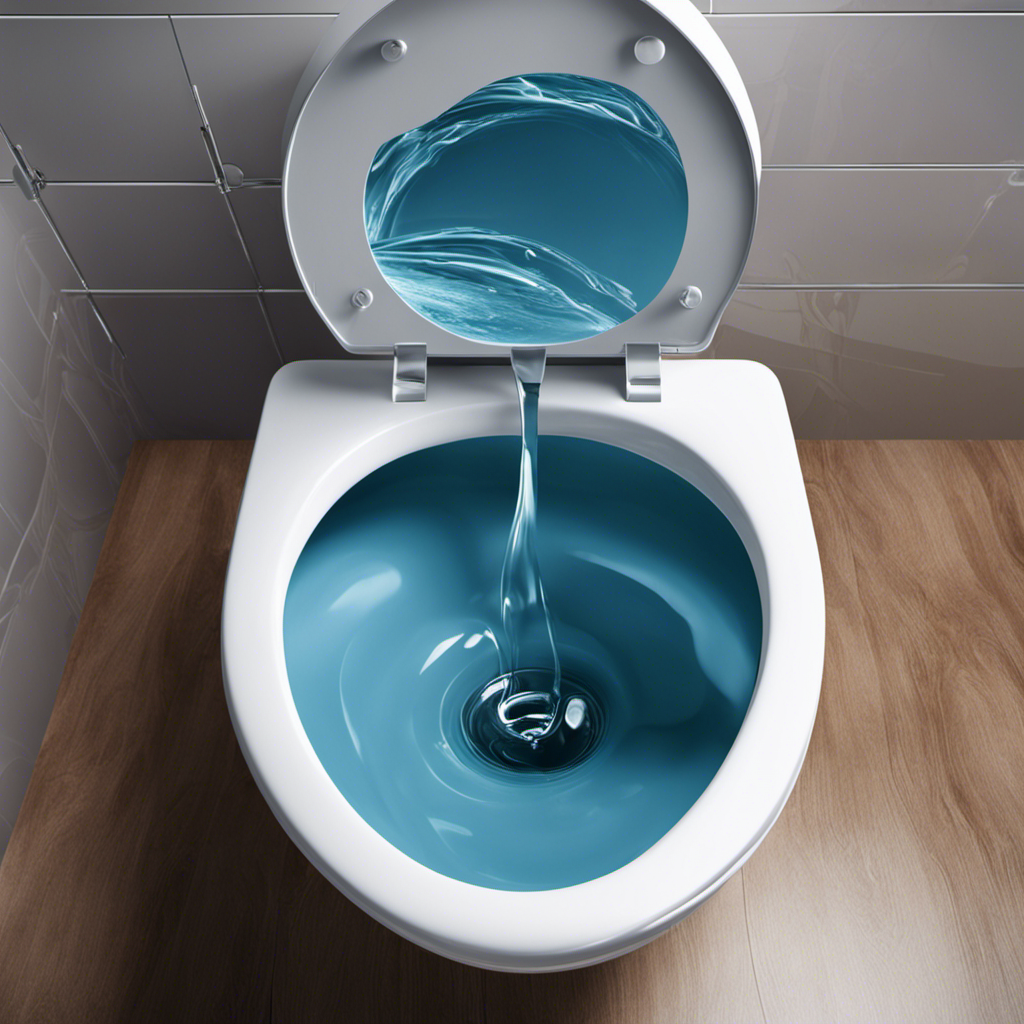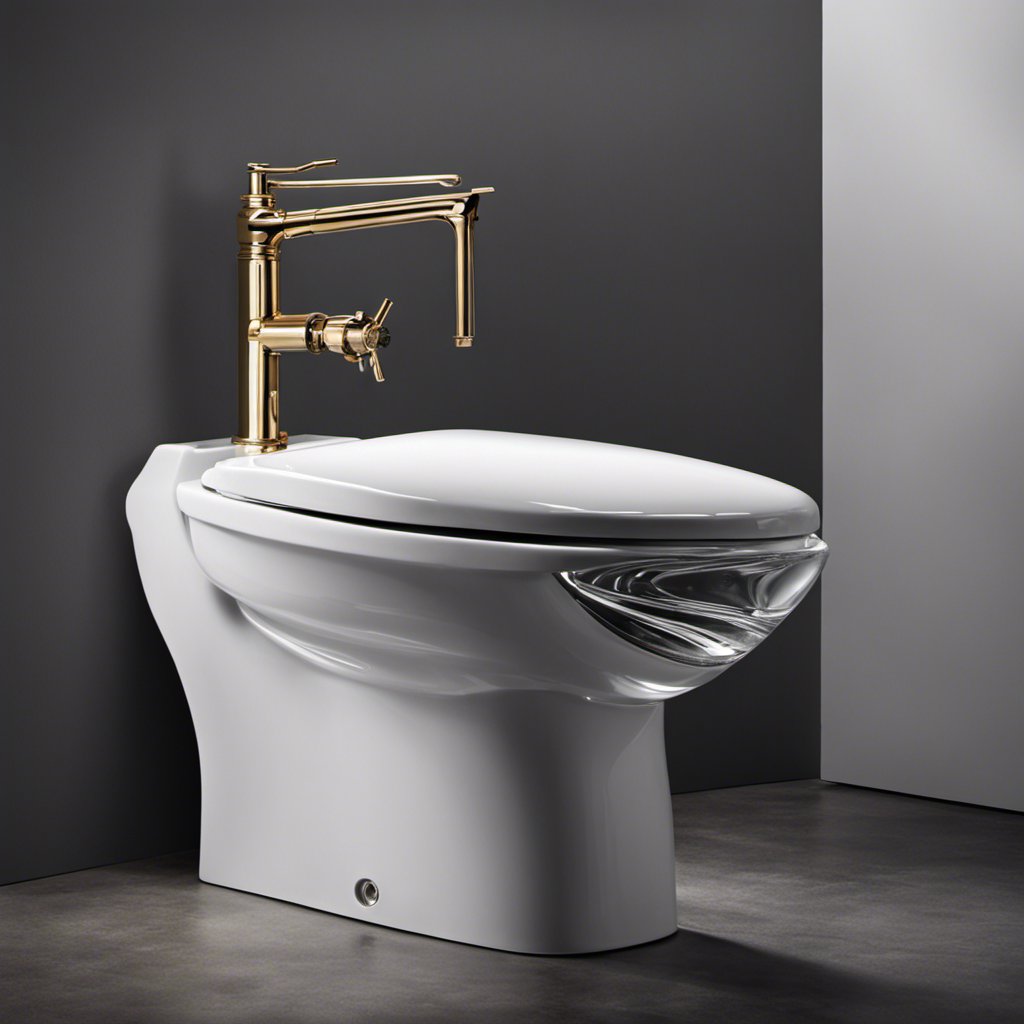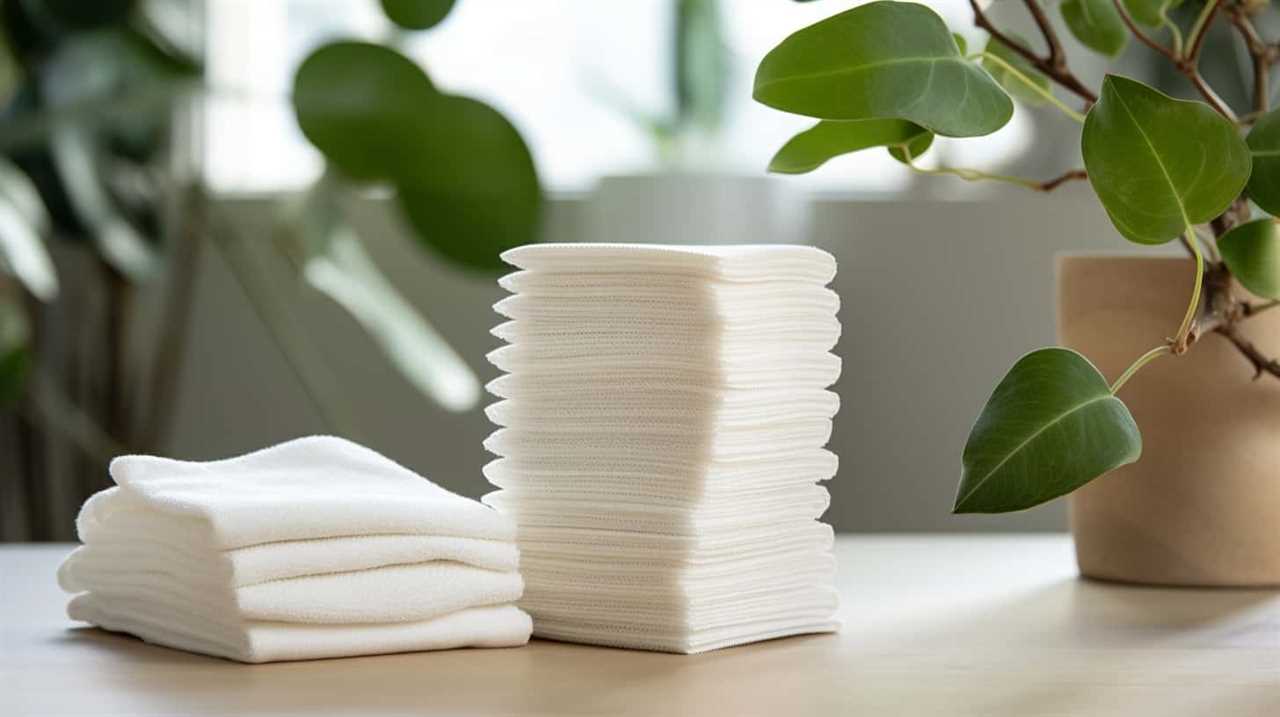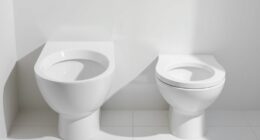Have you ever wondered why your toilet seems to be draining slower than usual? It can be quite frustrating, especially when you’re in a hurry. In this article, I will explore the common causes of slow toilet drainage and provide you with DIY solutions to fix the issue.
We’ll also discuss when it’s time to call in a professional. By the end, you’ll have the knowledge to prevent future problems with slow toilet drainage.
So, let’s dive in and unclog the mystery behind this pesky problem.
Key Takeaways
- Clogged pipes and flushing non-flushable items are common causes of slow toilet drainage.
- Gurgling sounds, longer emptying time, and low water level are signs of a slow-draining toilet.
- DIY solutions include using a plunger or toilet auger, but caution and following instructions are important.
- Calling a professional is necessary for recurring clogs, multiple slow or clogged drains, and strange noises or odors.
Common Causes of Slow Toilet Drainage
One common cause of slow toilet drainage is a clogged pipe. When foreign objects or debris get stuck in the pipes, they can obstruct the flow of water, causing the toilet to drain slowly.
Clogged pipes can occur due to a variety of reasons, including flushing items that should not be flushed, such as sanitary products or excessive amounts of toilet paper.
Another factor that can contribute to slow toilet drainage is water pressure issues. If the water pressure in your plumbing system is low, it can affect the flushing power of the toilet and result in slow drainage.
It is important to address clogged pipes and water pressure problems promptly to prevent further damage to your plumbing system.
Now let’s move on to the signs and symptoms of a slow-draining toilet.
Signs and Symptoms of a Slow-Draining Toilet
If your toilet is taking longer than usual to empty, you may notice gurgling sounds or water backing up into the bowl. These are signs and symptoms of a slow-draining toilet, which can be caused by a toilet clog or a low water level.
To determine if you have a toilet clog, you can use a plunger or a toilet auger to try and dislodge the obstruction. If the water level in your toilet bowl is low, it could indicate a problem with the toilet’s flushing mechanism or a blockage in the plumbing system.
In either case, it is important to address the issue promptly to prevent further damage or inconvenience.
DIY Solutions for a Slow-Draining Toilet
To address a slow-draining toilet, you can try using a plunger or a toilet auger. Both of these tools are effective in unclogging toilets and can be easily used for DIY toilet maintenance.
To start, place the plunger over the drain hole and firmly push down, creating a seal. Then, rapidly push and pull the plunger to create suction and dislodge any blockages.
If the plunger doesn’t work, a toilet auger can be used. Insert the auger into the drain hole and slowly rotate the handle while applying gentle pressure. This will help break up any stubborn clogs.
Remember to always be cautious when using these tools and follow the instructions provided. Regular toilet maintenance can prevent future slow-draining issues by keeping the pipes clean and unclogged.
When to Call a Professional for a Slow-Draining Toilet
Sometimes it’s best to call a professional when your toilet is not draining properly. While there are cost-effective solutions for slow-draining toilets that you can try on your own, there are certain situations where it’s better to leave it to the experts.
Here are a few key indicators that it’s time to call in a professional:
-
Recurring clogs: If your toilet keeps clogging even after you’ve tried DIY methods, it may be a sign of a more serious issue in your plumbing system.
-
Sewer line problems: If multiple drains in your home are slow or clogged, it could indicate a problem with the main sewer line, which requires professional expertise to diagnose and fix.
-
Strange noises or odors: Unusual sounds or foul smells coming from your toilet could indicate a more complex problem that should be addressed by a professional plumber.
Preventing Future Issues With Slow Toilet Drainage
When it comes to preventing future issues with slow toilet drainage, regular maintenance and proper use can go a long way. By taking a few simple steps, you can keep your toilet functioning properly and avoid the frustration of a slow-draining toilet.
Toilet maintenance is essential to prevent clogs and keep the drainage system clear. Regularly cleaning the toilet bowl and tank can help remove any buildup that may cause blockages. Additionally, avoiding flushing items such as wipes, feminine products, or excessive toilet paper can prevent clogs from forming in the first place.
In troubleshooting slow drainage, it’s important to consider factors such as water pressure, venting system, and the condition of the pipes. If the issue persists despite regular maintenance, it may be necessary to call a professional plumber to assess and resolve the problem.
Remember, prevention is key when it comes to maintaining a properly functioning toilet. By following these maintenance tips and troubleshooting slow drainage issues promptly, you can ensure a smoothly running toilet for years to come.
| Maintenance Tips | Troubleshooting Slow Drainage |
|---|---|
| Regularly clean toilet bowl and tank | Check water pressure and adjust if necessary |
| Avoid flushing non-flushable items | Inspect venting system for blockages |
| Use toilet paper in moderation | Check condition of pipes for damage or clogs |
Frequently Asked Questions
How Much Does It Cost to Fix a Slow-Draining Toilet?
Fixing a slow-draining toilet can be cost-effective. DIY techniques such as using a plunger or a drain snake can often solve the issue. If these methods fail, it may be necessary to hire a professional plumber for further assistance.
Can a Slow-Draining Toilet Cause Damage to My Plumbing System?
A slow-draining toilet can potentially cause damage to the plumbing system if not addressed promptly. To prevent any consequences, it is important to take preventive measures such as regular maintenance and avoiding flushing non-flushable items.
Are There Any Home Remedies to Unclog a Slow-Draining Toilet?
There are several home remedies to unclog a slow-draining toilet. One option is to use a toilet drain cleaner specifically designed for this purpose. DIY methods such as using a plunger or a plumbing snake can also be effective.
Can a Slow-Draining Toilet Be a Sign of a More Serious Plumbing Problem?
A slow-draining toilet can be a sign of a more serious plumbing problem. Potential causes include clogged pipes, sewer line issues, or a malfunctioning toilet. If the problem persists, it is advisable to call a professional plumber for assistance.
How Long Does It Typically Take for a Professional Plumber to Fix a Slow-Draining Toilet?
On average, a professional plumber can fix a slow-draining toilet in about 1-2 hours. The common causes for this issue include clogs, blockages, or problems with the toilet’s internal components.
Conclusion
In conclusion, dealing with a slow-draining toilet can be a frustrating experience. However, by understanding the common causes and signs of this issue, we can take appropriate action to resolve it.
DIY solutions like using a plunger or a drain snake can often fix the problem. But when these methods fail, it’s important to call a professional plumber to avoid further damage.
Interestingly, it is estimated that 90% of slow-draining toilets are caused by a clog, emphasizing the importance of regular maintenance and proper usage to prevent future issues.










